This article has received 23 edits. The last edit was made on February 14th, 2023
– Added confirmation Justin asks for approval before recording spoken podcasts
28 days ago I set myself the challenge of making money from a brand new online business.
Today my four-week challenge is over, and I’m excited to tell you that (in my opinion) the project has been a huge success.
Not only did the “startup” make money (not thousands, but a respectable amount given my constraints), but I also learned a whole new facet of selling online.
This is going to be a very detailed post of exactly what happened, so I’ll share some numbers first.
- Sales: 5
- Expenses: $99.75
- Revenue: $450 (I had to stop selling on day nine so I could actually build the site)
- Emails Sent: ~250
- Full days worked: ~16
Time was undoubtedly my biggest expense, which I’ll cover in more detail at the end.
If you’re new to the challenge, you should know that I had the following rules in place:
- I couldn’t use my name or connections in any way to promote the site
- I couldn’t spend any money on advertising
- I wouldn’t work on weekends, so my results were more replicable
- I couldn’t offer any services based on skills that I already possess
Most challenging was that I vowed to build something that readers of Gaps could replicate without prior online experience.
I recommend setting time aside to read this update in its entirety, rather than just skimming certain sections.
My Original Idea for The Startup (This Isn’t What I Built)
As a podcast owner, I have a strange confession to make: I almost never listen to podcasts.
I’ve probably downloaded 10 podcast episodes in the past 18 months.
I understand how valuable podcasts are to millions of people – they hit record download numbers on iTunes in 2016 – but I rarely listen to them.
I’ll happily listen to an audiobook if I’m driving (there are dozens on my iPhone), but that’s primarily because I know what to expect.
The problem with business and marketing podcasts is that there’s so much ‘noise’ that I don’t know where to start. Each show has dozens or even hundreds of episodes to choose from.

If I could be convinced to become an active podcast listener, it would be because I was sure I was finding the signal, rather than the noise.
This simple “problem” is what I originally planned to tackle with my 28 day challenge.
My aim was to find the absolute best marketing podcasts that other people have published, condense only their very best shows, and then release them under my own brand.
The idea being that you could listen to Pat Flynn interview someone for an hour, or have that interview cut down into the best 10-15 minutes, and get similar value in a shorter period of time.
I believed the project would take off because a) many people are like me and want to save time and b) podcast owners could be introduced to a brand new audience.
There was just one problem: Would podcast owners really allow me to take their content and republish it on my own show?
Would my argument that they could be introduced to a new audience stand up in a cold email from a stranger?
I thought the idea was brilliant (Hello, Ego), but my success hinged on something that was ultimately out of my control.
To give myself a better chance of succeeding, I whipped up a quick landing page from a $12 template on Theme Forest.
I thought the name Recap Cast – suggested by my brother – was the perfect description of what I was planning to create.

I set-up the landing page so people could see this was a legitimate venture if they checked out the website in my email address.
Things were looking bleak when the first few email responses came back looking like this.

And many of them saying something like this.
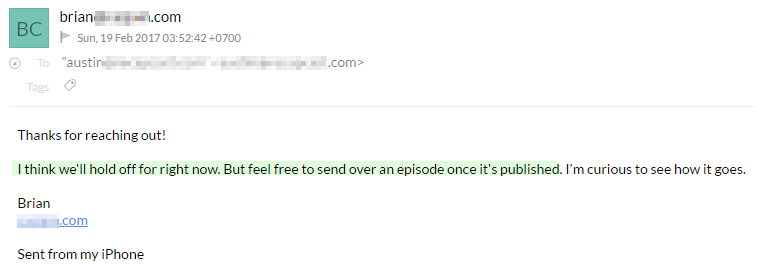
They weren’t saying No. They just, understandably, wanted to know what I was going to do with their content before they agreed for me to use it.
To my great relief, a lot of people said Yes. Some even came up with a great slogan for the concept.
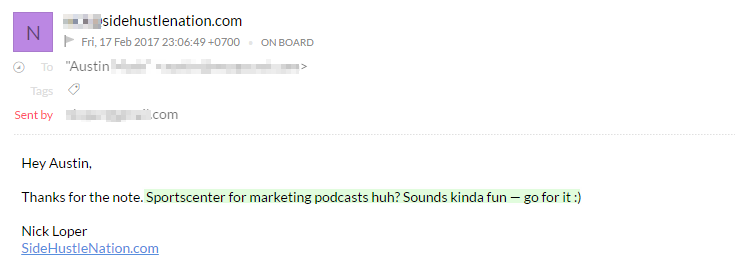
Being British I’m not familiar with Sportscenter, but I guess our equivalent would be “Match of the Day for Marketing podcasts”.
I loved that.
Without making this post too image heavy, enough podcasters were on board to make the project a success. I’ll explain in a second why I didn’t go ahead and build it.
HUGE thank you to the following people who gave a random stranger a chance.
- Dan from TropicalMBA
- Eric Siu from Growth Everywhere
- John Lee Dumas from EOFire
- Nick Loper from Side Hustle Nation
- Andrew Warner from Mixergy (Andrew even gave free access to his premium program. Incredible).
- Artur from Breaking Into Startups
- Steve from My Wife Quit Her Job
- Michael from Solopreneur Hour
- Abagail & Emylee from Think Creative
Even though enough people said yes for me to go ahead and actually make this a real “startup”, I decided not to continue.
There was a lingering feeling in the back of my mind that if I ever released this project – as much as I love the idea of it – you would be disappointed that I focused on the make money / marketing space for the challenge. With 1,000+ people tweeting about my case study, I felt an added responsibility to do something different. I began the challenge a few days earlier than planned because I didn’t want the people who agreed (above), to potentially associate it with me and improve my results. Just 48 hours before officially starting, I had to realign my focus. I really like the idea of condensed learning. Taking detailed subjects and converting them into more digestible media. I’ve already shown it’s a concept which is making some businesses millions of dollars. I randomly decided that I would take this same condensed podcast idea and target the personal finance industry. I’ve never had much interest in personal finance (besides the making money part) but figured that if I was successful in the space, people wouldn’t be let down by the industry I had chosen. Just as I was about to start reaching out to podcasters to see if I could condense their episodes, I came across another podcast doing something different. Instead of condensing podcast episodes, they were simply reading aloud the best articles on that particular topic. My first thought was “Damn, this is a much better idea. I can probably get far more content creators on board”. Instead of asking people if I could edit content they’ve already produced, I could create a new audience for them through audio. The guys behind Optimal Living Daily have three podcasts following this model which are all doing very well. I reached out to Justin, the owner of the podcasts, and he said he does ask permission before recording each show. I now had a new idea, and a new audience to target, but once again decided this was not the startup I wanted to build. I was already one week into the challenge, but couldn’t picture myself creating content around a topic I didn’t really have much interest in. I was still set on the idea of creating a podcast based on reading the web’s best written content, if for nothing else that I could record a lot of shows, quickly. The problem was that I just didn’t have any interest in the personal finance space. The question I now had to answer was this: What articles do I love reading, outside of marketing, and would listen to if I had the choice? While I founded one of the most popular personal development blogs many years ago, I don’t read much self-help content anymore. It tends to get repetitive after a while. That being said, there was an article I read last year which reignited my interest in the subject. That article was written by a man named Filipe Matos. Filipe had started a 21 day challenge of waking up a 4:30am each day, and documented the positive impacts it had on his life. While waking up at 4:30am may not be that extreme to you, it was a challenge for Filipe as, like myself, he runs his own business so can wake up at any hour of his choosing. I was so interested in this idea that I documented my own 30-day journey of waking up at 5am. 30 minutes later than Filipe, but for an extra nine days. I absolutely love these kind of ‘life-hack’ articles that I could potentially replicate myself, but where could I find more of them? DING. DING. DING. As cliché as it sounds, I had a lightbulb moment. I decided that I would find the absolute best personal development and personal growth articles from Medium.com – where I found Filipe’s original article – and turn them into spoken audio. I had to check whether I needed some kind of agreement from Medium before going ahead, but their Terms of Service are pretty clear: You own the rights to the content you create and post on Medium. This meant I just needed to contact my favourite authors on the site and see if they would allow me to read their articles. I would later contact around 50 Medium writers and request to read their content for the podcast. 36 of them replied emphatically, “Yes!”. If I planned to publish three podcast episodes per week, that’s three months of updates taken care of. As you can see from the dates in the emails above, the replies were received a few weeks into the case study. From day one I was determined to generate revenue, even without a website or final strategy in place. The most obvious way to make money with a podcast is to sell advertising within episodes, so that’s the monetisation angle I focused on. The problem with selling advertising is that people want to know your download numbers and take a look at the show to make sure it’s relevant to their business. Since I didn’t even have a website at this point, I also didn’t have download numbers to share. I figured that I would have much better success selling ads on a podcast that didn’t exist, “I’m going to work hard to promote it”, than one which existed yet had no download numbers to speak of. This is what I mean by selling the invisible. I presumed that the only way I could sell sponsorship opportunities on a podcast yet to launch is if my offering was cheap. The price point I had in mind was $50 for a 30-second mention at the end of a show. At this point I was still focused on building a podcast related to personal development and personal finance. I didn’t have the idea to read Medium articles until week two. Since I couldn’t spend any money on advertising, the only way I could get in front of people was to email them. I hoped that by showing I was willing to work hard to promote the show, people would just “throw 50 bucks my way” to support the venture. I found 40 personal finance / development bloggers and sent them the following email. The text I highlighted in green was really the only selling point I had. “I’ll work hard so you have less chance that you’re setting $50 on fire”. I personalised the email by writing their name at the start, and mentioned what I think they could promote based on what they had on their site. In the example above, I mentioned the ‘action guides’ Lidiya sells. Out of the 40 emails I sent, I received just one reply. 39 of the 40 people didn’t even say “No thank you”. Lidiya was the only person kind enough to give “Austin” a response, and even that was a no. The more experienced of you reading this are probably thinking “Well duh, no way that was going to work.” I totally understand (and practice) the concept of giving value up front before asking for anything in return, but I was on such a short deadline that I thought I could go for the kill straight away. That, and the advertising I was selling was pretty cheap. I was trying to sell based on sympathy, and had just “burned” the 40 email addresses which took a good few hours to collect. I haven’t missed the irony that I was primarily emailing personal finance bloggers, who constantly write about how to save money and not spend it on things they don’t need. I wasn’t really sure what to do at this point. It was only the first day so I definitely wasn’t going to give up, but receiving a single reply from 40 emails was pretty disheartening. I decided to try and find people already advertising on personal development and personal finance blogs to see if they would be interested in advertising on the show. Sadly, bloggers in these industries typically monetise with affiliate links or Google Adsense. I only found a handful of advertisers after looking at over 100 sites. That wasn’t going to work. Just as I was about to give up for day one, I received a very positive reply to an email I’d sent just one hour before. While looking for advertisers I noticed one website had a sponsors page, but the link to one of them was broken. Read the bottom email first. I can’t really explain why, but as soon as Travis replied, I had an inkling that he was going to purchase advertising from me. Even though he didn’t have a clue about who I was or what I was offering, he cared about improving his website (I’ll explain why this is important shortly). I sent the same pitch from my initial outreach, with a twist. I showed him how to improve his logo. Before you shout at the screen saying beginners can’t do this, I was able to recreate the graphic I sent within five minutes of using Canva (free) which I had never used before. You’ll see the video of that on the next page. Travis’ original header is on top, with my suggested improvement below. I simply removed the white box and rewrote the text. This was literally a 30 second job and again, I’ll show how anyone reading this can do the same. He replied. It worked! I’m not joking when I say I ran around my living room shouting. I know this was only the first day, but I felt so much pressure since I announced the challenge – one month before I actually started it – that I was ecstatic I’d essentially made a sale out of thin air. When I didn’t follow up for a day or two (since I had no podcast yet) Travis pushed me to send over an invoice, so he was 100% ready to pay. I couldn’t send him my bank / Paypal details, since it would give away my name and the challenge itself. Thank you Travis! If you have student loan debt and need advice on paying it off, I haven’t met a nicer guy. I thought I had it figured out. I was almost writing this final update on day two, thinking I could just write “I’ve found the key to selling ads”. That key being that you tell people about broken links on their website or something else they can improve, and that’s your “in” to strike up a business deal. Over the next week I sent personal emails to around 75 more bloggers to let them know about problems with their website, or other things they could improve. I used the free tool at Broken Link Check.com to quickly find links on sites that didn’t work, like so. I aimed to genuinely help people, rather than focusing on getting something in return. Like telling people their sitewide Instagram link wasn’t working… Or one of their navigation bar links didn’t work… Or they had a link on their ‘mentions’ page that no longer existed… For whatever reason, unbeknownst to me at the time, I still couldn’t use this ‘in’ to get people to advertise on the show. It was so weird. Why had it worked so well when I was emailing Travis, but it just didn’t work when I contacted other people? I was starting to worry that the $100 offer from Travis would be the only offer I would receive. It was certainly better than nothing, but I feared it wouldn’t really inspire others to test their online business idea in a similar way. I even went as far as creating graphics for people for articles they had featured in their sidebar. That’s the graphic I created for a personal finance blogger named Brian, “Why You Should Start a Blog”, sitting in his right sidebar. It looked a little better than this – he seemed to mess up the dimensions when adding it – but I made sure it was a very simple thing to create, so if it “worked”, people wouldn’t claim they needed incredible Photoshop skills to replicate what I was doing. But still, I couldn’t turn that into a $50 advertising sale. A sale I argued would genuinely help him promote his site. After Travis’ initial purchase I thought I had it all figured out, but…I didn’t. The tactic that worked for him, simply didn’t work again. As someone who sells a lot of products and services online, I really wanted to understand why. Why did my broken link ‘tactic’ work once and then never again? Was I just lucky the first time? After going through all of the replies I received, I came to a (potentially unpopular) conclusion. Most bloggers simply aren’t looking to grow their audience. I know that sounds weird, and it’s weird to type. Surely anyone who has a blog would like more readers? Honestly, at least in the personal finance niche, I think most bloggers only care about sharing their thoughts and ideas, rather than trying to grow their brand. Of course, there were other reasons why people wouldn’t commit to advertising on the site: But still, I wasn’t asking for thousands of dollars, and in the case of Brian, I had already created a graphic for him which he could have potentially spent $50 on anyway. I just can’t come up with any other conclusion. The only thing in common with everyone else who purchased advertising from me was that they’re looking to grow their following and as such, they understand the value of traffic. I presume that everyone else I contacted – besides the downsides noted in the bullet points above – don’t really care about reaching a bigger audience. They aren’t making much money from their sites, and as people who preach the value of saving money, didn’t want to open their wallets to potentially reach more people. I was at day eight at this point, and desperate to land another sale so I could actually start focusing on getting Medium writers on board – I still hadn’t asked them – and start building my website. Through my research into finding personal finance blogs, I found an incredible resource doing something similar to what I’m doing here at Gaps. They regularly challenged themselves to make money with online projects over a (typically) 30-day period. They even sold a program on how to get advertisers for something without having a website, so I presumed they would happily support my mission. I pitched them saying they could use my first sale (Travis) as a case study for their training, and I believed they would be the perfect advertiser for the show. Sadly, their response mimicked the disappointing replies I had already received. Ouch. I wasn’t giving up just yet. My reputation was slightly on the line with this case study, so I had external motivation to keep going. I instead emailed a business partner of theirs with the same pitch. This time I received more than three words in response. Boom. Thanks to the awesome Jason Zook, I had my second sale. As a sidenote, if anyone does connect Jason’s business partner to the “Thanks but no” email above – they collaborated a few years ago – I should make something clear. When they sent that response they had mentioned in a prior email that they were on vacation, and I later learned their advertising program was created a few years ago. I haven’t lost respect for them, and totally understand why they weren’t willing to fork over cash to someone they didn’t know. If you haven’t skimmed the post up until now, you’ll know that my original idea was to create a podcast based on condensed versions of popular marketing-focused shows. At the time I emailed three large marketing companies to see if they would be interested in advertising on the show. The first email was sent to someone I consider a friend, and chat with on a weekly basis. I sent him a very personal email (using my pen name, Austin), but he replied saying that sponsoring podcasts hadn’t produced a great ROI for him in the past. The second email was sent to a very active CEO on Twitter who runs a marketing company you would recognise. They didn’t even reply. The third and final company I contacted, was Moz.com. To cut a long story (and image-heavy post) short, they agreed to advertise on the show for $200 in return for reaching at least 500 unique downloads (over as many episodes as it took). This was actually quite a hard sell, since I had to keep following up to make sure they were interested, but my persistence paid off. I said in my halfway update that I absolutely hated using a pen name (especially with companies I was already familiar with) so let them know about this challenge before today’s update. As I didn’t accept any money out of fear it would ruin the case study by revealing I was behind it, I wanted to be upfront about the challenge. Thanks for being awesome, Moz! For this next sale I followed the same formula I followed with Travis. I suggested changes to their website which they could improve upon (via video) and then used my “in” to pitch the sponsorship opportunity. It took a while to get a response from the video, but after a few days they replied. When reaching out to this person to see if I could share our correspondence for this update, I didn’t get a response. I’m not entirely sure why, but it could be because they felt “deceived” that I was using a pen name. I can show you the email I sent to them though. Once again I was relying on the angle of “I took the time to contact you, I’m going to put in so much work to make this worth your investment”. I don’t really like how ‘pushy’ I was here – it’s totally not my style – but I still didn’t have a website in place and was really hoping to show a few more sales for this case study. Here was his reply: It’s a shame I didn’t get approval to share his site as it’s a great resource. I’m relieved that after today I no longer have to be “Austin” anymore. My final interaction began by telling a successful blogger that I enjoyed their content and simply wanted to say hello. Keep in mind that I still didn’t have a website at this point. They were one of the few finance bloggers where I didn’t have much advice to offer. They were already doing a great job with their design and conversion options. All I could suggest was, “You should put a contact link in your footer and make your link to Twitter clickable.” I pitched the podcast and what I was hoping to create, as before, and asked for $50 to introduce their brand to a new audience. As with Travis, I didn’t reply because I didn’t even have a podcast to show them, but they followed up two days later asking if they could still get on board. Thanks to Steven at Make Wealth Simple.com, I had my fifth and final sale. If I had more time to focus on outreach and building connections, I think I could have easily pushed past the $1,000 mark. The common theme with all people who agreed to buy advertising is that they actively looked to grow their brand. I now know the type of bloggers to contact are only those who show initiative to convert visitors into subscribers (for example, if they had an exit pop-up form). Since I wanted this case study to show the entire process of building a website and generating traffic, I was running out of time and had to stop trying to make money. I was way behind schedule at this point, and hoping to make up some ground by building my website quickly. Unfortunately I had rushed into deciding on a theme to use, which I soon regretted. Here’s the theme I purchased to showcase my new podcast startup. At $59, this was the biggest expense (besides time) of the entire challenge. Not to take anything away from the theme creators – they offer incredible support – there’s just no way that a beginner webmaster could make the changes to this theme that I did. On paper the original design looked great, but to make it something I could successfully promote, it needed a lot of work. Here’s their original theme and my customised theme side by side. Some things were easy to tweak, like removing the ‘about’ sections which weren’t necessary, but some changes were more challenging. For instance: Overall, I’m happy with the end result but again: If you’re a beginner, this is not the theme for you. I spent way longer tweaking the theme than I had initially set aside. I didn’t have time to pick another design, but if I were to do this again, I would choose a simpler theme and embed audio files using Soundcloud. Keep in mind that at this point, all sales were made without a podcast or website. Though the theme was tough to work with, it doesn’t excuse the fact that you just need to take action to see results. I spent more time optimising how things looked on mobile than anything else. When viewed on a mobile phone, their header was dark and offered no description as to what the site was about. The menu button also took up an unnecessary amount of space, especially when you want people to download shows or subscribe via iTunes, rather than click on an About or Contact page. Since more people view websites on mobile these days than desktop, it’s something I had to work on. Now the name is revealed, allow me to introduce you to Spoken Growth.com. By Monday last week – that’s just 8 days ago – I was finally ready to start promoting Spoken Growth. Normally I would be fine with things like content creation or site design taking longer than expected, but it’s not ideal when you have just 28 days to do everything. As such, I had far less time to promote the site than I originally planned. That’s not an excuse – I think I did quite well promoting the show without a marketing budget – but it’s something I would have liked to spend more time on. Since I couldn’t spend money on ads, didn’t have time to rank in Google and I couldn’t use any of my existing connections, the only traffic generation tactic I could think to use was personal email outreach. There was just one problem: I had made introductions with a lot of personal finance bloggers, but now I was going to tell them about a podcast which reads articles from Medium.com. There would surely be some disconnect as many would be unfamiliar with Medium. Worried about a possible lack of shares, I decided to create a leaderboard which ranked the most popular personal finance blogs, hoping those who were featured would help promote it. Here’s what I made. It was incredibly rushed – literally conceptualized last Monday and finished on the same day – but I thought it would attract interest. It didn’t break any records on Twitter, but received a few likes and a couple of retweets.The Second Idea for the Startup (I Also Didn’t Build This)

The Third and Final Concept That I Absolutely Love (and Hope You Will, Too)

Selling the Invisible: How I Made a $100 Sale in The First 11 Hours
The Email I Sent to 40 Personal Finance Bloggers

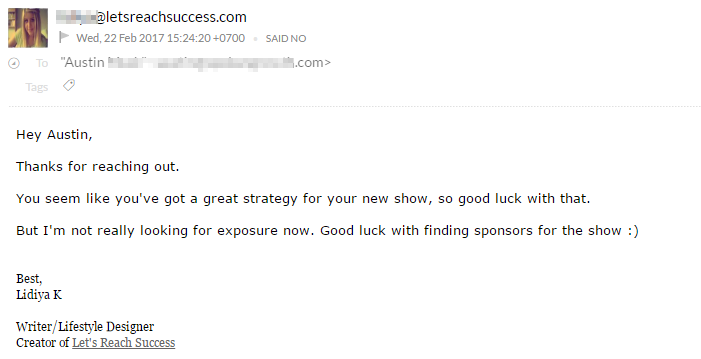
The $100 Sale

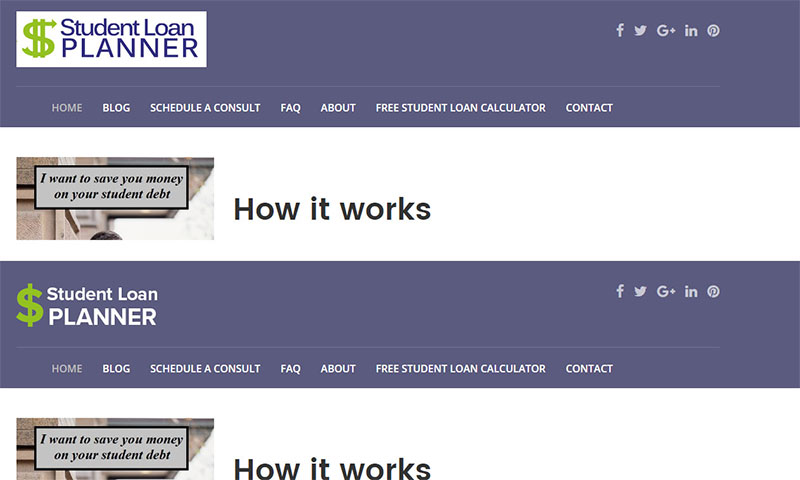

The Next Six Days Were Incredibly Demotivating
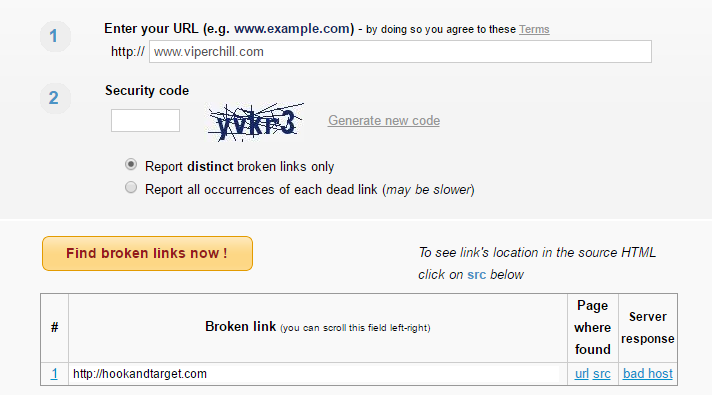
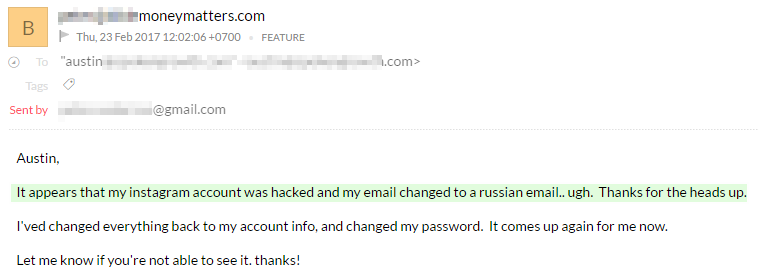
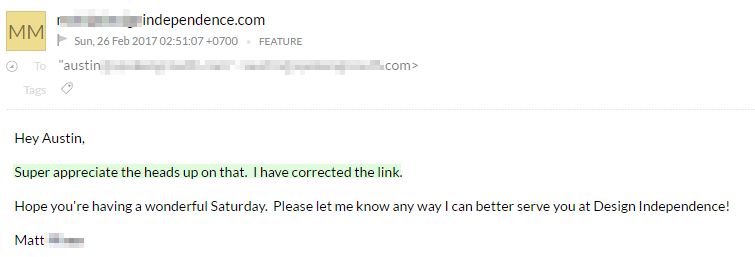
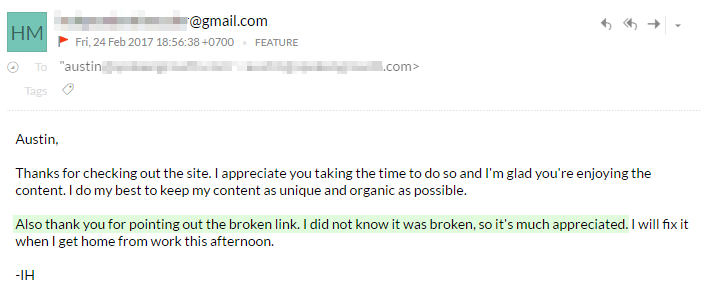
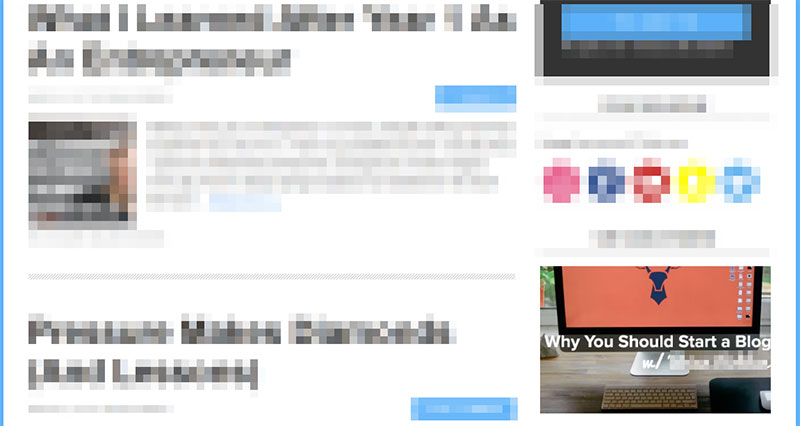
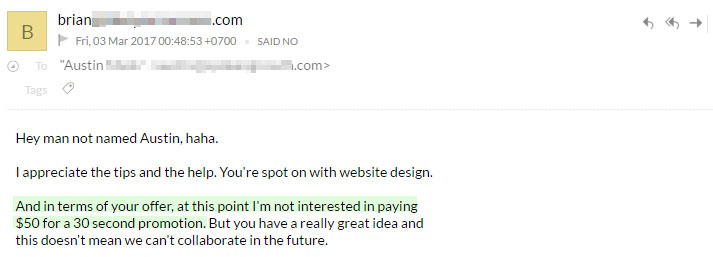
The Unexpected Realisation I Came Up With
Sale #2: $50 and a Lesson in Persistence

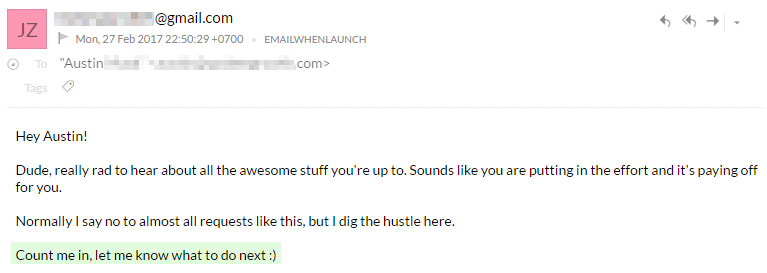
Sale #3: $200 and a Nigerian Prince
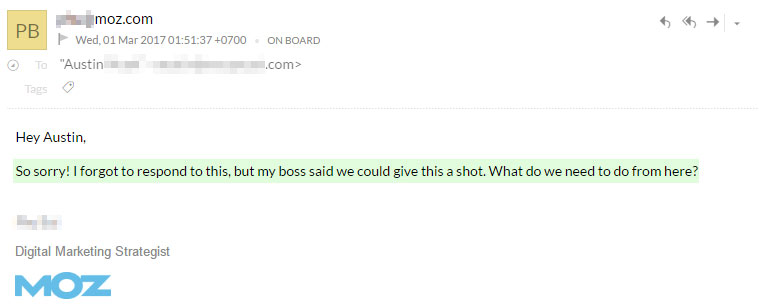
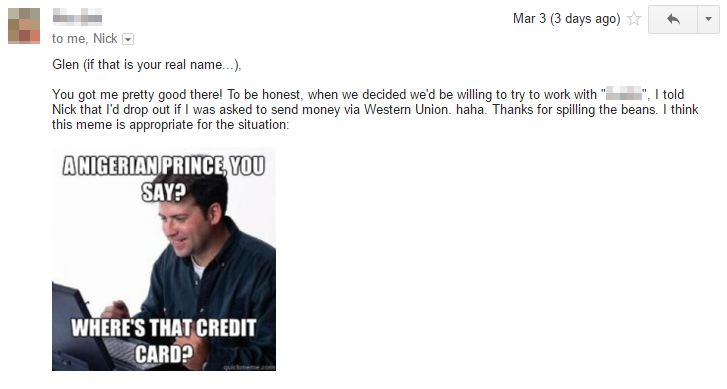
Sale #4: $50 Without Permission
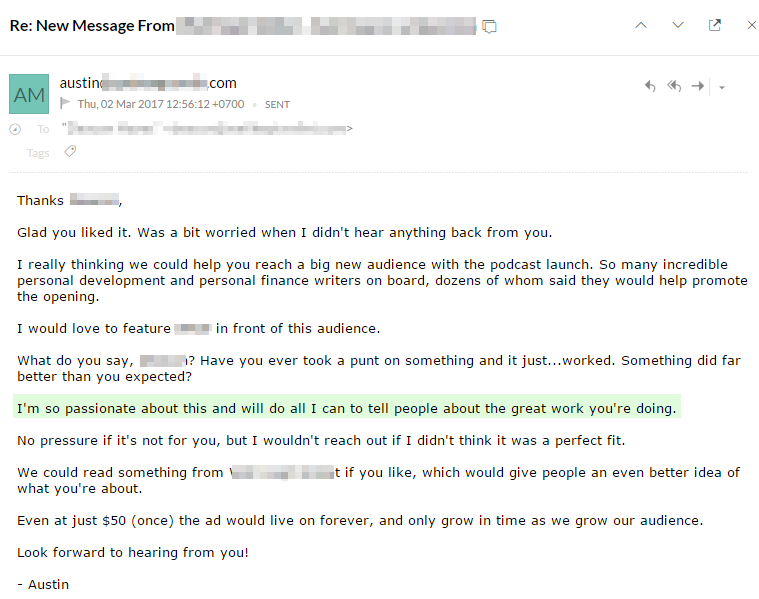

Sale #5: $50 From A Site I Couldn’t Really Help


Finally, It Was Time to Build the Website


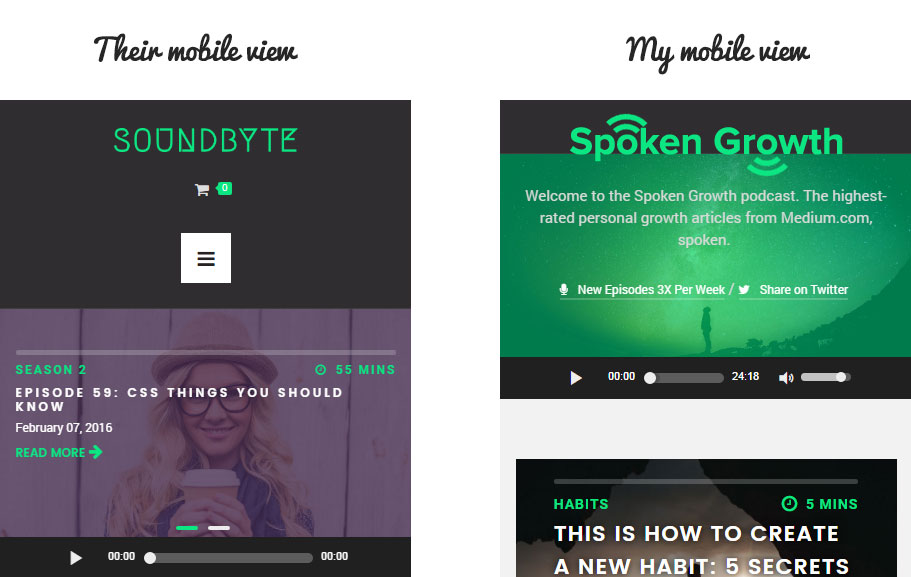
How to Market a Site Without A Budget
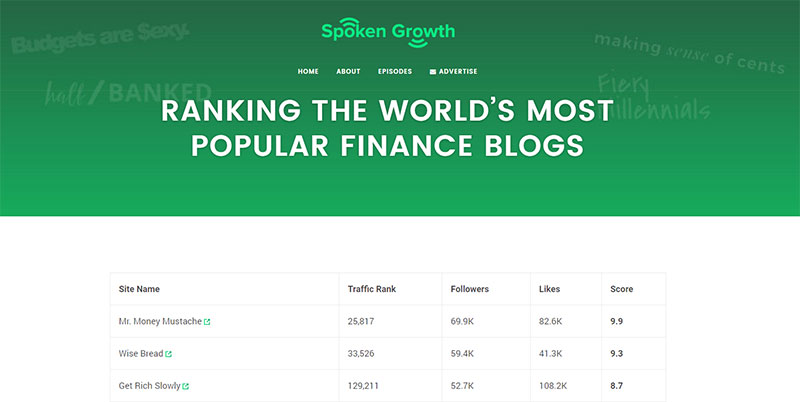
We ranked the world's most popular finance bloggers. Check it out -> https://t.co/MC38rXZhK6 Feat. @BudgetsAreSexy @ptmoney @half_banked pic.twitter.com/VZMD6sbRyB
— Spoken Growth (@SpokenGrowth) March 14, 2017
Nothing amazing, but not bad for a Twitter account which had zero followers just 24 hours prior.
Ranking The World’s Most Popular Finance Blogs https://t.co/e5RjOhxeaZ via @SpokenGrowth
— Jon Dulin (@MoneySma) March 15, 2017
So excited to be featured on this list of the world most popular personal finance blogs by @spokegrowth!! https://t.co/oTWe3GE9QG
— CleverGirlFinance (@CleverGirlCGF) March 17, 2017
Ranked on a list of the world's most popular finance blogs. Now to start moving up it! Thanks to all my readers!https://t.co/Ie2ClmSIDh
— Top Money Habits (@topmoneyhabits) March 15, 2017
You can see from the dates on the tweets how close to the end of the challenge I was able to make this happen. There were quite a few more, but you get the idea.
Here’s the general email I sent when asking for tweets.

The key sentences in the email are:
- 1. You have to let someone know why you’re emailing them or how you found them. Make it personal.
- 2. Here’s what I’m hoping to achieve.
- 3. ‘Taking the edge off’ a cold email from a stranger by trying to potentially build a relationship
If I were to start again from scratch I wouldn’t have created that top ranking page and instead just tried to promote the site as a whole. After all, even personal finance bloggers seemed to really like the idea.
@SpokenGrowth Just listened your episode about Creating New Habits, you're definitely a podcast I'll add to my queue https://t.co/VCJPNa6t52 pic.twitter.com/KhwuVi8iPb
— Kraken Fireball (@KrakenFireball) March 15, 2017
OK this is a hella cool idea: The best personal-growth articles on Medium, in podcast form. https://t.co/og5mbg1Ryk @spokengrowth
— Desirae Odjick (@half_banked) March 14, 2017
This is How to Create a New Habit: 5 Secrets From Research https://t.co/uQOJaFKFIq
— ESI Money (@FMFblog) March 14, 2017
Love this idea for a site https://t.co/kvdgPLxZFG @SpokenGrowth Looks like you are off to a great start
— Andrew Daniels (@FamilyMoneyPlan) March 14, 2017
The good people at @SpokenGrowth read my "How To Realistically Become a Millionaire" for you 🙂 #finance #investing https://t.co/PxE8ltBi7a
— Richard Reis (@richardreeze) March 15, 2017
@Medium has some great articles; now you can get the best ones in audio format on @SpokenGrowth https://t.co/drPf8EAmf8
— Chris Durheim (@keepthrifty) March 17, 2017
I don’t want to embed all of the tweets, but you can read them here.
The Funniest Part of This Journey for Me…
Was recording the podcast episodes.
As to not potentially reveal that I was personally behind the site, I needed to pull in a favour from someone to record the episodes.
If you’ve ever listened to my podcast before, you’ll know that I have quite a “weird” accent.
I was born and raised in the north-east of England – Newcastle, to be specific – and people from Newcastle, “Geordies”, have a very strong accent. Since we’re close to Scotland, the accent is slightly similar to Scottish.
When I moved to South Africa at 18 I would find myself in business meetings with clients who simply had no idea what I was saying. They would literally ask my boss, “What did he just say?”
Slowly but surely I had to tone down my Geordie accent and speak with a more understandable voice. I’ve had people tell me that I now sound American, South African and even Jamaican.
It was a personal highlight of mine to ask my brother – who works with me full-time and still lives in Newcastle – to record the shows.
This is more personal than useful, but it was hilarious to me to hear him trying to tone down his accent so people could understand what he was saying.
I would send him voice messages in a very strong Geordie accent, making fun of how the podcast introduction would sound.
I think he did a great job (iTunes link).
How I Would Grow the Brand (and Revenue) Going Forward
If you’ve been following this case study from the start then you know that I’m giving Spoken Growth – plus a $1,000 marketing budget – to a reader of Gaps.
In my last update, I picked five potential winners from people who tweeted about this challenge.
Gaps was created to share incredible online business ideas I don’t have time to build myself, so it wouldn’t make sense for me to build a new brand and focus on growing it.
As far as marketing goes, I subscribe to the idea that if you create a great product, marketing (mostly) takes care of itself.
Whoever takes on the site from here should focus on creating great connections with Medium writers, and always be in the minds of people who want to follow a podcast which reads the “best of the best” personal growth articles from the site.
There are only six podcast episodes published on Spoken Growth, but they all received hundreds (or in some cases, thousands) of likes on Medium.
The most common way to earn revenue from a podcast is to accept sponsorships, which should be much easier to attract once there are proven monthly download numbers.
Medium authors generally had no issue at all with me running ads on their audio counterpart.

There is another monetisation angle I would recommend focusing on, and that’s Patreon.
Patreon allows you to support content creators – whether that’s Youtubers, bloggers or podcasters – with a small monthly donation.
Some finance podcasts are doing quite well with this already.
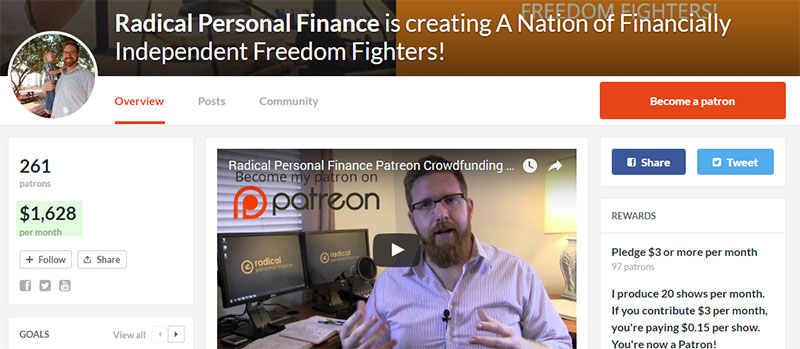
That’s $1,628 in monthly recurring revenue.
You’re not going to replace your job income overnight, but if you build a community of loyal followers, it’s certainly possible.
The Final Numbers
I said from day one that I didn’t expect to blow you away with revenue or traffic numbers. My entire goal with the challenge was to inspire you to take action with your own online ventures.
I’ve been growing online businesses for 11 years and while the tools and tactics I implement have evolved, the general population has not. I meet far too many people who spend more time reading about online success than trying to replicate it for themselves.
I hope your biggest takeaway is not that I made any money or that you like the concept, but that my results are held up by a massive pillar of failure.
I failed to abandon my original idea quickly enough.
I failed when 40 personalised emails resulted in a single reply.
I failed when I made graphics for sidebars and fawned over a broken link check tool, only for people to tell me they still had no interest in sending fifty bucks my way.
I failed to look at the theme I purchased on a mobile phone.
I failed at predicting how long it would take to design the website.
I failed at enticing 99% of people I emailed to advertise on the show.
Yet without people telling me “I’m not interested in buying ads” or “You can’t use my content” or “I’d rather wait until your podcast is live”, I wouldn’t have known to pivot my efforts and find the 1% who were interested in buying ads, who said I could use their content and who trusted me without seeing a site.
If there’s anything I succeeded with, it was persistence.
The quicker you start failing, the quicker you’ll start succeeding.
My I-hope-that-was-inspiring-to-someone rant out of the way, here are my final expenses:
- Domain name: $10.87 via Namecheap
- Hosting: $9.88 for the year (also via Namecheap)
SSL Certificate: $1.99(I didn’t end up using this)Recapcast Theme: $12(I also didn’t end up using this)- Zoho for sending emails with my domain: Free
- Website theme: $59 via ThemeForest
- Podcast hosting: $20/m via Libsyn (Not a requirement, but I needed the analytics for the case study results)
- Audacity for podcast editing: Free
- The intro music for the podcast: Free via Mattesar
Total spend: $99.75.
Time was undoubtedly my biggest expense, but I can’t really put a value on that. I estimate that I spent around 16 days working “full-time” to get results. At 8 hours per day, that’s 108 hours.
While I used Photoshop to create a logo for Travis, I show on the next page how I recreated it for free in five minutes with Canva.
My brother used a microphone to create the shows which was a Blue Yeti USB microphone. It currently retails for $109.99.
If I had stuck with the original idea of simply editing podcasts which already exist, then I wouldn’t have needed a microphone.
You could of course use whatever microphone is built into your laptop or buy something cheaper than the Yeti, but I think it’s a worthy investment.
If you factor the microphone into my total spend, that’s $209.74, which still results in a profit of $240.
For the sale I can’t share I used Camtasia to record my screen and offer website suggestions. I used Camtasia because I already had it installed. However, there are plenty of free screen recorders which do the job.
If you own a Macbook, you can actually use the pre-installed Quicktime application to record your screen for free, which I use on the following page.
I didn’t have as much time to work on promotion as I would like, but I’m happy with these download numbers:

The podcast was listened to 904 times on the site (134 times on iTunes, shown above), bringing total plays to 1,038.
While many plays on the site were only partial downloads, these results aren’t too shabby for just six days of promotion without a marketing budget.
This Is Only Half of the Story…
I know that (beginners especially) would like more detail, so I’ve covered exactly that below.
In the following content you’ll learn:
- How I set-up my web hosting
- How I set-up Zoho to send emails from my domain (free)
- How to edit podcasts with Audacity
- How to create graphics for free with Canva
And much more.
More importantly I share three incredible gaps in the market where I believe readers of gaps.com could take this idea and dominate with it in other industries.
I didn’t just want to show you a success story, but show other avenues where I believe you could take this concept and build an incredible online brand.
this is what we’re known for
Gaps in the Podcasting Niche
Just discovered the @ViperChill's First Rank Manifesto on https://t.co/ng0DhAoROz and I'm blown away.
— Noah 🤙🏼 (@noahpbrinker) April 15, 2020
Below this box is the text we’re famous for, but out of respect for you, we do have a disclaimer in place.
We spend dozens of hours preparing these reports and coming up with opportunities you can capitalise on, but we also don’t want to put your life-savings into an idea just because we wrote about it.
For that reason, we have an $8.88 request: Please don’t spend more than that testing out an idea (it’s the cost of a .com on Namecheap) to see if it has legs and makes sense for your business.
We’ve made many successful predictions and even ran our own case study, but we’ve also invested time and money into ideas that didn’t pay off. We’re not directly making money from this report, but still want to be respectful of your own finances.
Let’s dive in…
The names Musk.
Austin Musk.
This is probably going to sound weird, but I had a very specific reason for using that pen name: I believed using the surname of someone successful would help people associate success with my venture.
Hey, I’m a marketer. I like to test things 😉
It certainly helped create the connection…

…but I don’t think it helped the results.
I don’t want to regurgitate the 5,000 word posts around the web of how to set-up a website, so I’ll try to be more direct.
To start with, I used Namecheap for both my hosting and my domain name. You can see the date I purchased the Spoken Growth.com domain in the email below.

It really doesn’t matter if you use Namecheap or Godaddy or Google Domains. I’ve used Namecheap for years and a friend of mine runs their Twitter account, and have had no reason to switch.
Domains also come with free WHOIS protection, so people can’t see your personal address if they look for more info on the name.
Their web hosting is also incredibly cheap. Cheaper than Bluehost, Hostgator or any other big names you may be familiar with.
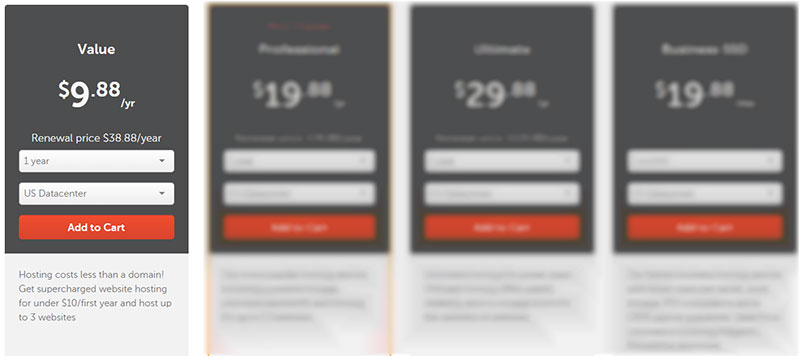
That works out to less than $2/m for your first year of hosting.
The second year of hosting does jump quite a bit in price, but still works out to be less than $4 per month. If you’re still working on your site in year two, it’s going to be more than paying for itself.
Namecheap hosting gives you access to cPanel which allows you to install software like WordPress (the software I use to power Gaps and Spoken Growth) very quickly. They also take care of things like updating the software for you automatically when newer versions are available.
With their cheapest hosting option, you can host three websites.
If you want to use another host that’s totally fine, just make sure they offer cPanel (which 99% will).
In the future if your site is receiving thousands of visitors per day you may want to move your site to a more powerful server, but when you’re just starting out, a shared host is fine.
Podcast Hosting & Editing
The theme I used for the case study already has their own built-in podcast player.
However, since I needed to be able to show some download numbers for the case study results, I also signed up for Libsyn to host my episodes. Tracking download numbers is their key selling point.

Libsyn starts from as little as $5/m, but when you start uploading more shows, you’re going to need more space. I use the $20/m option for Gaps, and I also used it for Spoken Growth since I wasn’t sure how many episodes I would add.
You can use the RSS feed that Libsyn give you to add your show to iTunes, Stitcher and now the Google Play store.
Libsyn isn’t a requirement, but it does make life easier.
To edit all of my podcast episodes I use Audacity, which is free for Windows, Mac and Linux. You can download it here.
I record podcasts using a USB microphone. Although using a cheap / internal microphone is fine if you’re chatting on Skype or recording your screen for someone, I would definitely recommend upgrading to something better if you’re going to start a podcast.
The Blue Yeti USB microphone available here on Amazon (not an affiliate link) is a popular choice, and it’s what my brother used to record episodes for Spoken Growth.
Video: Using Canva (Free) for the First Time
When I revealed the graphic I made for Travis, I did say you could replicate it yourself without any prior design experience.
I also used an internal microphone and recorded my screen with free software.
If you’re using Windows, there are plenty of other free screen recorders just a Google search away.
Three Incredible Gaps in the Market
I didn’t just want to inspire you with my live case study challenge, but also highlight other opportunities to succeed with this business model.
Deconstructing Success: I Hope Somebody Makes This
Late last year, a friend of mine and very successful business owner started a podcast called Deconstructing Success.
The host, Chris, aims to “connect the dots” with successful people and find out what makes them successful. It’s really good.

There’s just one problem: Chris hasn’t really been consistent in putting out updates.
He hasn’t released a new episode in almost two months. I can understand why – he really studies people before interviewing them – and again, Chris runs a very successful business.
Still, it’s a shame his updates are so infrequent as I love the concept.
I’m not going to recommend anyone copy Chris’ original idea as that isn’t cool (or necessary for success), but I do think a condensed version could be a huge hit.
I would totally listen to a show that had just 5-10 minute episodes on interviewing the world’s most successful people, and asks them quick-fire questions like:
- How do you spend the first hour of your morning?
- How many hours do you sleep?
- How do you stay motivated?
- Are there any productivity ‘tactics’ you believe in?
- What’s your biggest daily challenge?
- How do you deal with stress?
Just simple, to the point questions. Don’t try to make any conclusions with the answers. Just let us, the listeners, come to them ourselves.
We’re always interested in the lives of others whether it’s sports stars, celebrities, politicians or business owners. I would love (and think others would too) a vibrant, to-the-point show on what they think got them there.
Remember, condensed learning is making some companies millions of dollars.
A Growth Hacking / Marketing Hacks Podcast
I decided not to do anything in the marketing space because people might be disappointed it was used in a case study, but that doesn’t mean there’s not an absolutely huge market who would devour this info.
There are already two communities which highlight the best content in the world of marketing advice:
- Inbound.org
- Growthhackers.com
Thanks to their user voting system, the content you find at the top of the sites each day is (typically) very good.
You could also visit places like /r/Entrepreneur on Reddit and go back the top content of the past year to see what people are sharing.
Don’t just cover everything to do with marketing, but cool little tricks and (of course) hacks, that people have used to grow their online businesses.
I’ll be your first subscriber, but you’ve got to make sure you pick the right articles to read.
A “Skinny Fat” Podcast
Skinny Fat is a popular name given to men who have a physique which is, well…skinny fat. They’re not overweight, but they’re not ripped either, and have a bit of fat around the belly.
Interest in the topic has been steady for years, so you wouldn’t just be capitalising on some trend which could quickly die out.
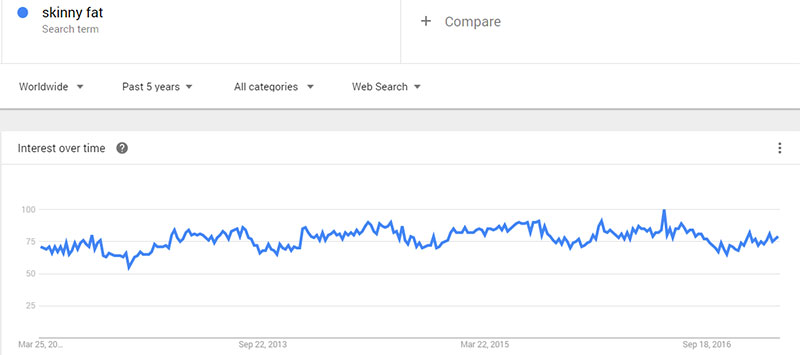
Of course, there are already thousands of blogs and forums that people can read to get advice on improving their physique.
But that truth is itself part of the problem: It’s hard to know who to trust and where to start.
If you’re interested in fitness, I think a podcast which took the absolute best articles on the topic of nutrition, fasting, keto diets and more and read them aloud could be a huge hit.
The most important factor, as with the marketing idea, would to ensure you’re reading only the very best articles on the topic.
Nothing average or “good enough”. Only the best content from great sources like Martin Berkhams Lean Gains website and Authority Nutrition.
Remember, This Can Work in Any Niche
The idea of reading aloud the best articles on any topic (with permission) could really work for any topic.
iTunes seem to be gearing up to add a ‘spoken’ section to their podcast store, which could be huge.
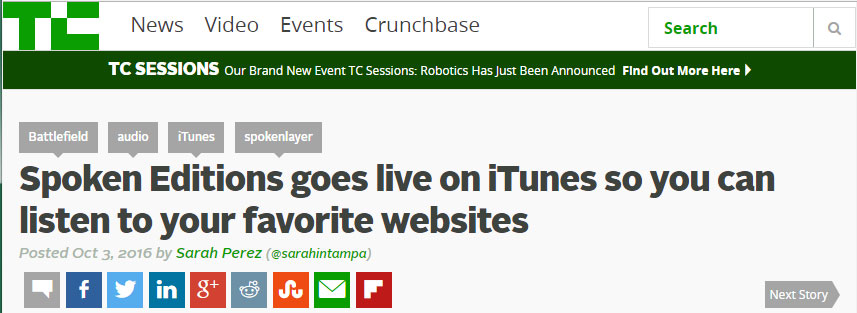
The article above says it’s live, by I couldn’t find anything being launched just yet.
The idea for condensing Chris’s podcast is likely because I’ve been a guest on his show (and I think I rambled a little).
The idea for the growth hacking podcast is because it’s something I would listen to.
The idea for the skinny fat podcast is because I used to be skinny fat. I like to think I’m now a lot less skinny, and a little less fat.
Don’t doubt your idea just because I didn’t write about it here. There are still billions of people interested in other topics.
How to Find the Best Content Without Any Tools
There are many premium tools you can use to quickly find the “best” content on any website, such as BuzzSumo or Ahrefs.
I didn’t use either of them when looking for incredible Medium articles to find. Instead, I just performed a simple ‘site:’ search on Google.
Since I needed to have a personal finance related article on Spoken Growth, I used the following search query.
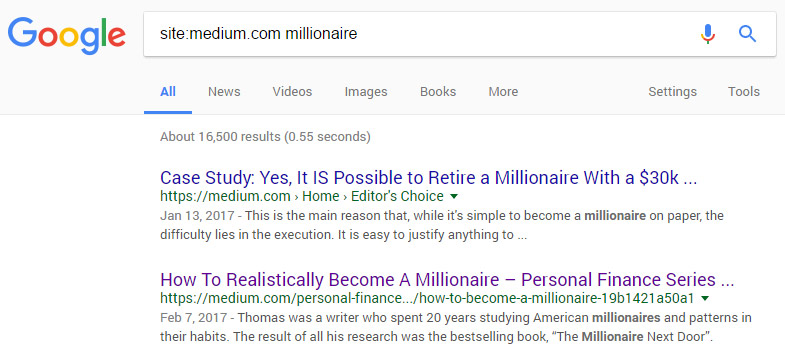
If you’ve already checked out Spoken Growth you’ll recognise that second result is actually an article we read aloud.
You can do this kind of site query (just site:, not adding a word after) for any domain, and Google will return the most important pages on that site.
You’ll probably have to skip a page or two of ‘general’ pages like About and Contact but once articles start appearing they’ll likely be some of the most popular on the site.
Would You Like More Case Studies Like This? Leave a Comment Below…
I rarely open the comments on Gaps, but since this is a special project, I would love to hear your feedback and answer any questions.
Would you like to see me do more case studies like this?
Did I miss something you didn’t quite understand?
Do you need theme suggestions for your own online projects?
I’m happy to answer any and all of your questions below.
If you want to see what I do next at Gaps, make sure you follow me on Twitter or Facebook, or via our newsletter.
Clicking the heart button below lets us know what types of success stories and opportunities you would like to see more of. Thank you so much for reading!

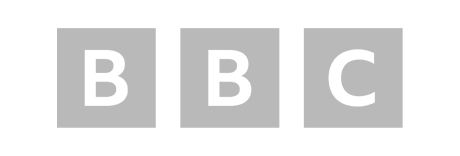



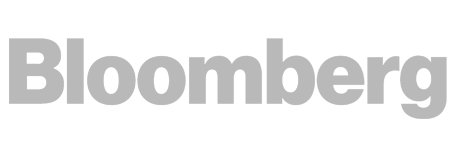
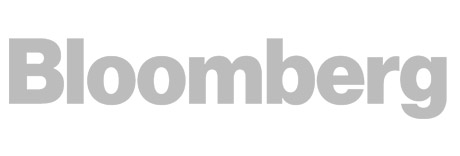

 For over a decade we've been sharing some of the best niche ideas on the web.
For over a decade we've been sharing some of the best niche ideas on the web.



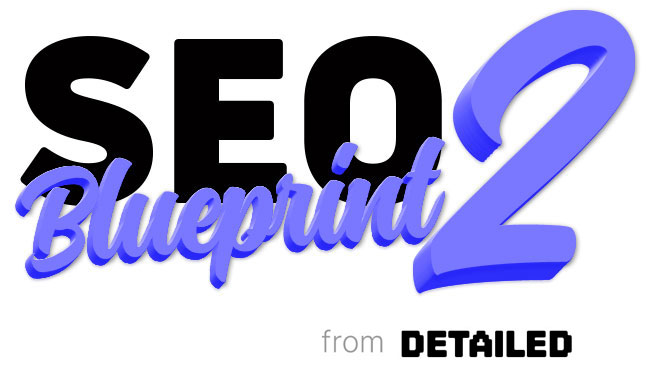
 is our own fully fledged SEO framework and exclusive community focused on taking search engine rankings to the next level.
is our own fully fledged SEO framework and exclusive community focused on taking search engine rankings to the next level.